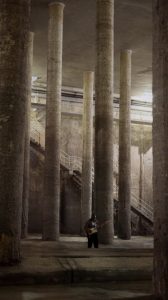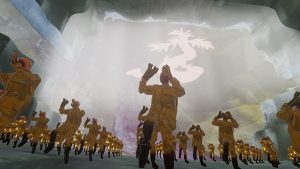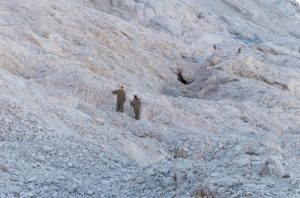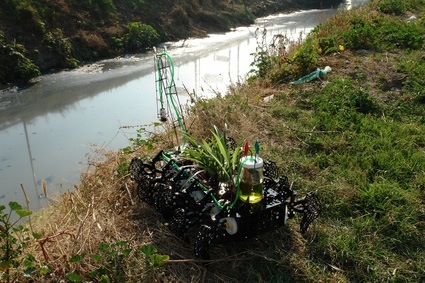 Photo Gilberto Esparza
Photo Gilberto Esparza
Gilberto Esparza first appeared in the radar of bloggers a couple of years ago when he started colonizing Mexico City with Urban Parasites. Made of recycled consumer goods, the small robotic creatures explore the urban space in search of any source of energy they can feed on. Under its quirky, amusing side, the project also had the objective of providing a basis for a critical exploration of the role that technology plays in cities.
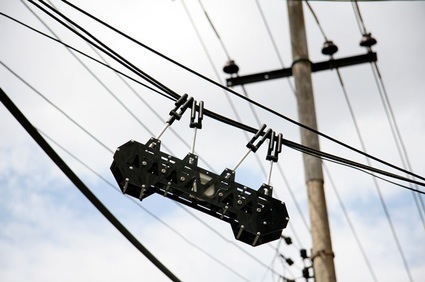 The dblt feeds on the energy that runs through electric wires. The species collects sounds in the environment and reproduces them sporadically. Photo Gilberto Esparza
The dblt feeds on the energy that runs through electric wires. The species collects sounds in the environment and reproduces them sporadically. Photo Gilberto Esparza
Gilberto Esparza is currently showing one of his latest projects, Nomadic Plants, at Laboral Art and Industrial Creation Centre in Gijón. Just like Urban Parasites, this new work is part of a series of experiments that aim to stimulate a critical discussion about the ambiguous forces wielded by technology.
Vegetation and microorganisms live in symbiosis inside the body of the Nomadic Plants robot. Whenever its bacteria require nourishment, the self-sufficient robot will move towards a contaminated river and ‘drink’ water from it. Through a process of microbial fuel cell, the elements contained in the water are decomposed and turned into energy that can feed the brain circuits of the robot. The surplus is then used to create life, enabling plants to complete their own life cycle. As Gilberto wrote in our email conversation, “The nomadic plant is a portray of our own species. It also deals with the alienated transformation of this new hybrid species that fights for its survival in a deteriorated environment.”
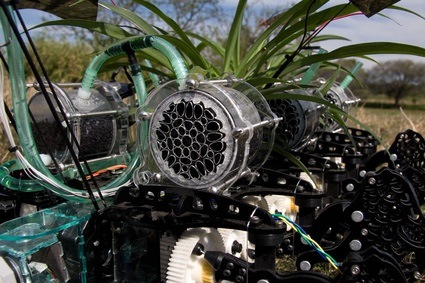 Photo Gilberto Esparza
Photo Gilberto Esparza
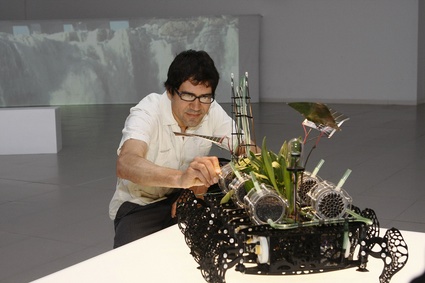 Image courtesy Laboral Art and Industrial Creation Centre
Image courtesy Laboral Art and Industrial Creation Centre
I’ll quote the artist again, this time from a text included in the press material for the exhibition:
The fact that a new species, the by-product of those alienating processes, appears -merely by coexisting- in those areas of ecological disaster represents a manifestation pointing to the serious social and environmental impacts on communities that once depended on rivers, now the source of their ailments. At this point, it is important to highlight the ambiguous potential of the transforming power of the human species, due to its ability to destroy but also to restore. For that reason, what is required is a new way of thinking, which would position us as antibodies on the planet, and a proper understanding of the importance of living in symbiosis with our planet and with all species.
Extracts from our online conversation:
When i first read about Plantas Nomadas, i immediately thought about Archigram’s Walking City because of the nomadic and self-sufficient qualities of Plantas Nomadas. But what was your actual inspiration? Sci-fi novels and movies? Ongoing research in laboratories exploring the possibilities of microbial fuel cells in robotics?
I have been researching and building autonomous robots that can survive in urban space, stealing the energy that the city itself generates. Later on, i found online some publications about research projects using microbial fuel cell. I was immediately inspired to develop a project that would engage with the issue of pollution in rivers. I visited El Salto Jalísco, a community very affected by this problem. I was therefore interested in making it the location of the intervention.
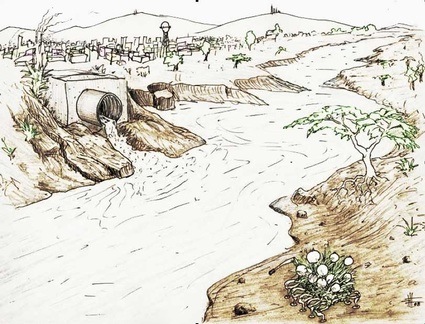 Drawing by Gilberto Esparza
Drawing by Gilberto Esparza
Can you tell us which kind of plants and micro-organisms cohabit inside the body of your machine?
The microorganisms that live inside the robots are identical to the ones you can find in the river. I prefer to use the plants that used to be native to the river before it became so polluted.
How has the public reacted to your work so far? Both in Mexico and in Spain?
People liked it a lot because the project opens many doors on issues such as our relationship with nature, the thin line that separates the inert and the living and also the directions taken by scientific research which, very often, respond to the interests of the current economic system.
Thanks Gilberto!
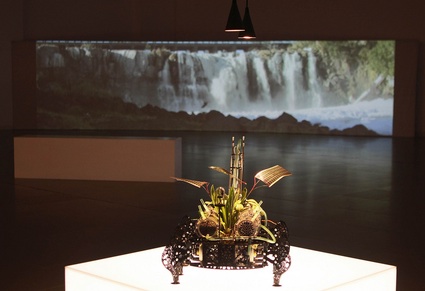 Image courtesy Laboral Art and Industrial Creation Centre
Image courtesy Laboral Art and Industrial Creation Centre
The installation at Laboral features the robot but also a video of the process of its creation, a documentary showing the robot in action in the river Santiago, El Salto, Jalisco (Mexico), a series of photos taken by the artist and computers showing the project’s webpage.
Plantas Nomadas is on view at Laboral, Gijón (Spain) until June, 7, 2010.


